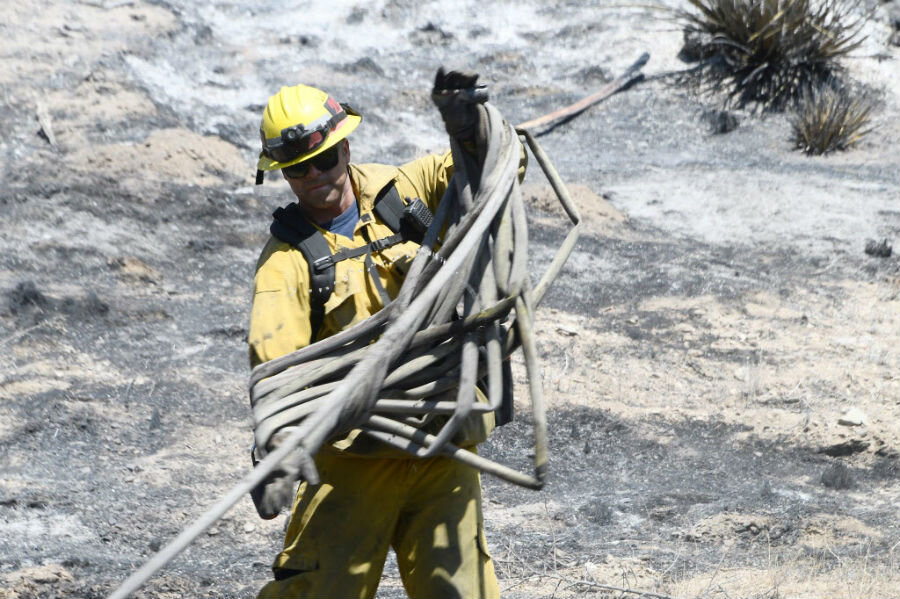Californians return home as evacuations lifted for Blue Cut fire
Loading...
The Blue Cut fire, which has been raging since Tuesday, seems to finally be under control.
The blaze, which burned 37,020 acres, has reached 85 percent containment. The mass evacuation orders instituted last week, which affected more than 82,000 people, have been lifted across the fire area.
The fire quickly spread out of control after it ignited due to unknown causes last Tuesday. The blaze proved to be a significant challenge to firefighters, who struggled with containment for the first several days of the conflagration, as the Monitor previously reported. The fire was noteworthy for its rapid expansion and reportedly unusual ferocity by firefighters on the front lines of the inferno.
There have been no reported fatalities from the Blue Cut fire. However, more than 105 homes and 213 buildings have been destroyed, according to KABC-TV in Los Angeles.
The Nims family were among the first people to return to the West Cajon Valley on Sunday afternoon, The San Bernardino Sun reported. Though their house was leveled, parents Lee and Tina and 16-year-old Cody were remarkably calm.
“You keep memories forever,” Cody said. Everything else was just possessions.
“It’s better to lose stuff than people we care about the most,” he said.
Despite the ferocity of the fire, the destruction for most residents of San Bernadino county remains relatively low.
“This fire did not go through a dense community, like some fires do,” fire spokesman Costa Dillon told the Associated Press. “Almost all of this area is sparsely populated.”
For many California residents, this sort of fire is becoming business as usual. The state is currently in its fifth year of severe drought, with high temperatures in summer creating the perfect conditions for massive wildfires like this one. Dying trees have contributed literal kindling for fires across the state driving up the cost of fighting fires to record levels last year, as the Monitor reported previously. This combined with unusually high summer temperatures over the last few years have made what might otherwise have been small, manageable fires into massive conflagrations that have provided significant challenges to firefighters and other emergency services.
This is to say nothing of the financial and emotional cost of replacing homes and property destroyed by fire.
Still, as far as the Blue Cut fire is concerned, the return home of thousands of residents is good news. A release from the Incident Information System reporting the lifting of evacuation orders posted "WELCOME HOME!!" in bold print to the evacuees. Evacuation centers will remain open.
Despite the progress on the Blue Cut fire, six other dangerous wildfires are still raging throughout the state of California, according to the Associated Press. One such fire is threatening Hearst Castle, the famed residence of newspaper mogul William Randolph Hearst, upon whom Orson Welles based his titular character in the classic film, "Citizen Kane."








